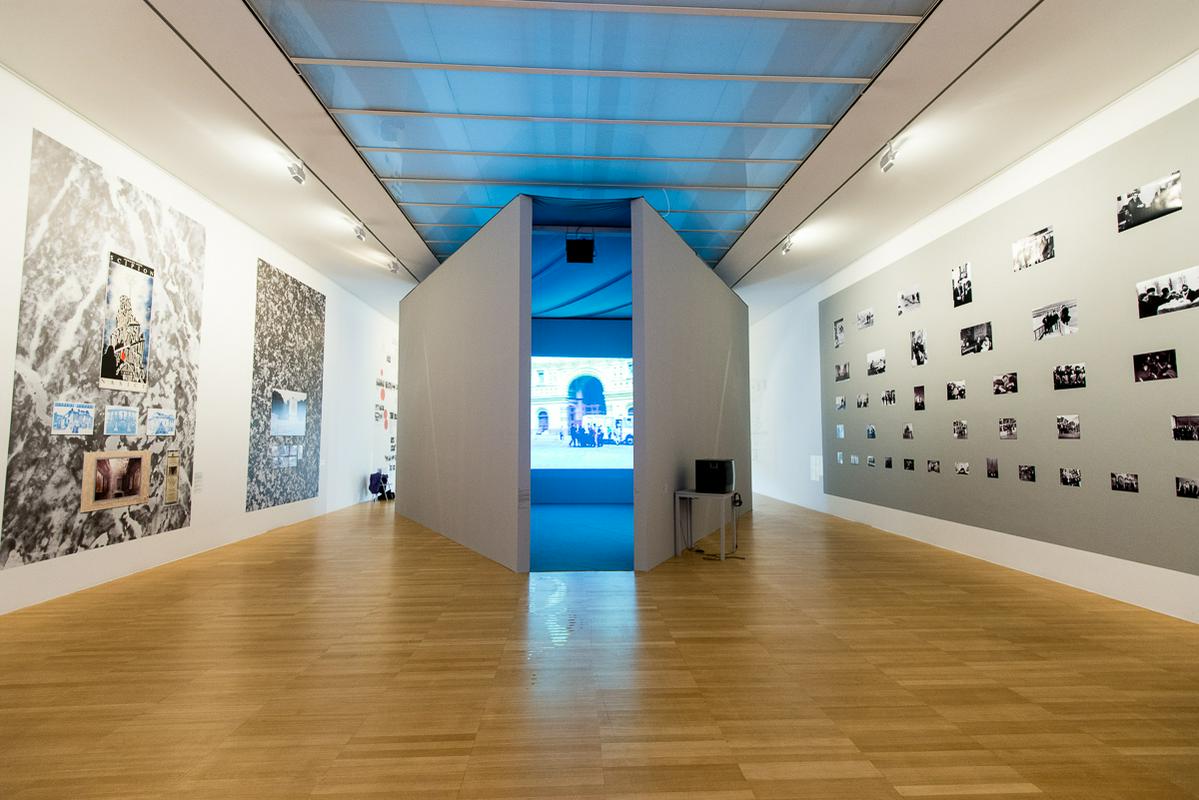

Zdenka Badovinac, the curator and director of the Moderna galerija / Museum of Modern Art, and her team have been preparing the exhibition for 18 months; it is open until 16 August. This is the first NSK retrospective exhibition in Slovenia. “It was high time that the Museum of Modern Art as a national institution tackled this task,” said Badovinac before the opening.
The NSK differed notably from the liberal critique of socialism, emphasise the authors of the exhibition. Rather than employing the standard forms of artistic critique or irony, the NSK based its approach on subversive affirmation and over-identification, articulating, among other things, the kind of society the collective envisioned after the collapse of socialism. Thus the NSK State in Time was founded in 1992.
The exhibition, NSK from Kapital to Capital, covers a period that marked the final decade of Yugoslavia, highlighting the fact that NSK was no less a critic of coming global capitalism than of the failed socialism that was ending. The exhibition reveals many individual events and the duration of the various concepts at work in chronological order. The pivotal decade presented in the exhibition was marked by a series of key political events leading up to the dissolution of the state and the bloodshed in the 1990s. With each concert, exhibition, theatre performance or other public appearance, NSK triggered processes that have not run their course to this day.
Who are NSK?
NSK countered the post-modern art of the 1980s, applying a retro method to reveal ideological manipulation through imagery. NSK means New Slovenian Art, alluding to both “Junge Slovenische Kunst”, the title of a special issue of the German avant-garde journal Der Sturm in 1929 featuring young Slovenian art, as well as to the trauma caused by German political and cultural hegemony over the small Slovenian nation.
The NSK art collective was founded in 1984 by the multimedia group Laibach, the visual arts group IRWIN, and the theatre group Scipion Nasice Sisters Theatre. On the same day, the design department, New Collectivism, was also founded. Later, NSK also established the Department of Pure and Applied Philosophy, Retrovision, Film, and Builders.
What lesson might be gleaned from NSK that could be of use to us today? On the one hand, we are witnessing a process of complete symbolic depletion, and on the other, the reactivation of symbols. Today, this game of symbols is becoming similarly dangerous to that of the 1980s, making the NSK tradition more topical than ever.
Laibach was established on 1 June 1980 in the industrial town of Trbovlje. The group functions collectively according to an anonymous quadruple membership principle, EBER-SALIGER-KELLER-DACHAUER (pseudonyms), which include a random number of people. Laibach apply the method of retro-avantgardism in their work.
IRWIN is a collective of five painters, i.e. Dušan Mandič, Miran Mohar, Andrej Savski, Roman Uranjek and Borut Vogelnik. The group was established in 1983 in Ljubljana. Its principal approach is described as emphasised eclecticism, based on the retro principle method.
The Scipion Nasice Sisters Theatre was founded on 13 October 1983 in Ljubljana. Its members included Eda Čufer, Miran Mohar and Dragan Živadinov. After its self-termination, it was transformed into the cosmokinetic observatory Red Pilot and then into the Noordung Cosmokinetic Cabinet in 1990. The retro-gardism method was applied in all three stages of the theatre.
The New Collectivism was a design department established in 1984 for the needs of Neue Slowenische Kunst. Its members included Darko Pokorn, Roman Uranjek (IRWIN), Miran Mohar (then member of the Scipion Nasice Sisters Theatre, later member of IRWIN) and Dejan Knez (Laibach). The New Collectivism also used the retro-principle method.
The Department of Pure and Applied Philosophy was established by Peter Mlakar in 1987 in Hamburg. Mlakar works on his own philosophical and literary projects and also closely cooperates with Laibach, i.e. contributes speeches or metaphysical sermons to the group’s concerts.
Retrovision is the department of film and video formed in 1987 in Ljubljana. Represented by director Peter Vezjak, it was intended to direct projects for television and to inform the public about Neue Slowenische Kunst projects.
The Film department coincided with the making of the production book for a Heimatfilm, From the Mouths of Animals, in 1984, which was only partly realised in the following year with the Heimatfilm, Beauty and the Nation, directed by Igor Zupe, then a student of film directing.
Builders was formed in 1985 in Ljubljana as the Neue Slowenische Kunst department of architecture and urban planning, on the premise of reconstructing Slovenian architecture. The members included Andreja Medvedič, Staša Zupančič, Aljoša Kolenc, Aleš Prijon, and Andraž Torkar.
Polona Prešeren, SINFO


































































